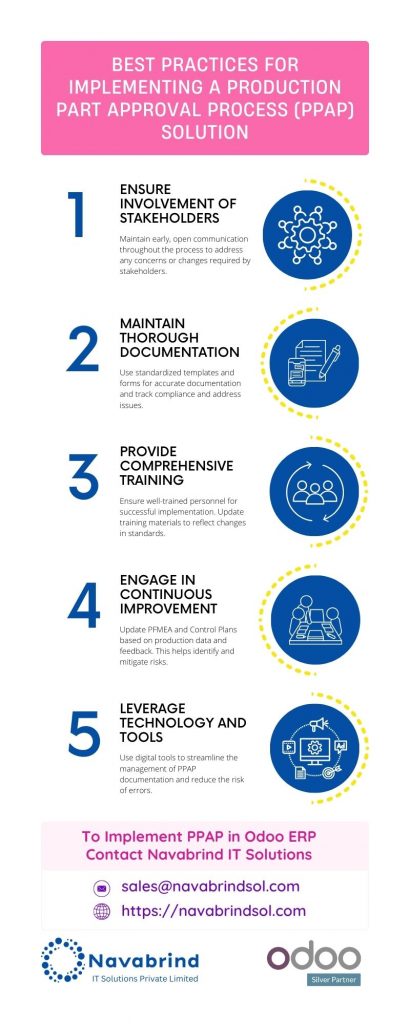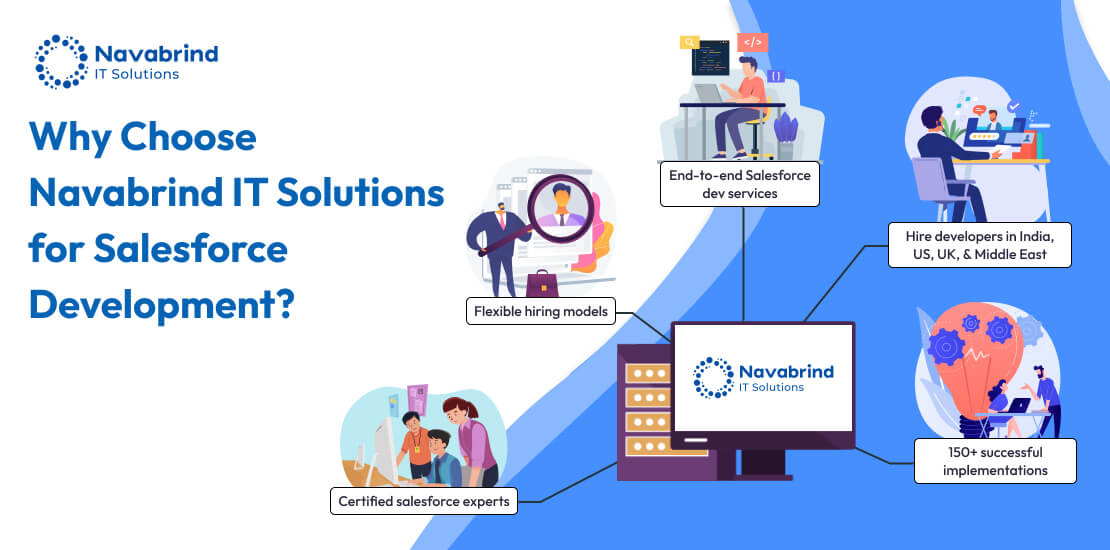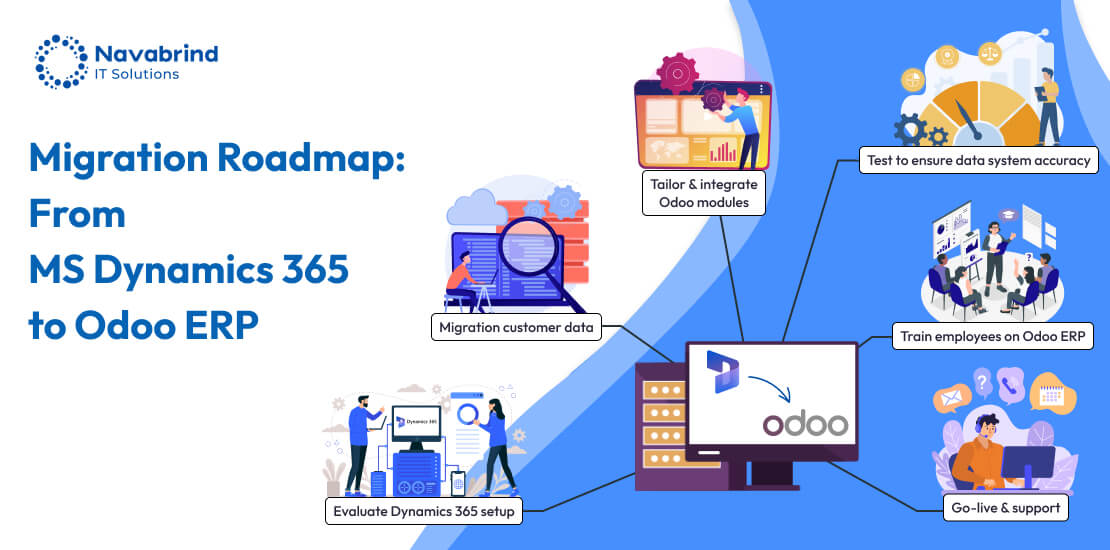Streamlining Quality Control: A Guide to PPAP in Manufacturing
- November 13, 2024
- Posted by:
- Category: Uncategorized
PPAP is essential in high-precision manufacturing industries, which require suppliers to meet quality standards before mass production. This blog post outlines the documentation requirements, submission levels, approval criteria, and best practices for PPAP implementation. It also addresses common challenges and strategies for maintaining compliance. For expert assistance with PPAP integration and automation, contact Navabrind IT Solutions.
Production Part Approval Process (PPAP) is a crucial methodology used in manufacturing, particularly in industries like automotive, defense, retail, retail, medical device, aerospace, and other high-precision sectors. PPAP ensures that suppliers meet the quality and performance standards required for parts before mass production begins. So to jump right in, let’s review the documents required for a PPAP submission, the various submission levels, approval criteria, and best practices for implementing a PPAP solution in your organization.
Documentation Requirements for a PPAP Submission
A PPAP submission involves a comprehensive collection of documents and records that demonstrate a supplier’s ability to meet the customer’s requirements. These documents provide evidence that the manufacturing process has been thoroughly planned, implemented, and validated. The main documents and records included in a PPAP submission are:
- Design Records: These are the technical drawings and specifications that define the part. They include details such as dimensions, materials, and tolerances. Design records ensure that all stakeholders have a clear understanding of what the final product should be. This documentation is crucial for verifying that the part has been produced according to the agreed-upon design and specifications.
- Process Flow Diagrams (PFDs): PFDs illustrate the sequence of operations and processes involved in manufacturing the part. They provide a visual representation of the entire production process, from raw materials to finished product, highlighting critical steps and potential areas for improvement. A well-constructed PFD helps identify potential bottlenecks and ensures that every step of the production process is accounted for.
- Control Plans: Control plans detail the methods and controls used to ensure that the manufacturing process consistently produces parts that meet specifications. They outline inspection and testing procedures, control limits, and reaction plans for addressing non-conformances. An effective control plan is essential for maintaining process stability and product quality over time.
- Failure Mode and Effects Analysis (FMEA): FMEA is a systematic approach to identifying and evaluating potential failure modes in a manufacturing process. It assesses the severity, occurrence, and detectability of each potential failure, helping to prioritize actions to mitigate risks. Conducting a thorough FMEA allows manufacturers to proactively address potential issues before they impact production.
- Measurement System Analysis (MSA): MSA evaluates the accuracy and precision of measurement systems used in the production process. It ensures that the measurement equipment and methods provide reliable data, which is crucial for maintaining product quality. Accurate measurement systems are vital for verifying that parts meet design specifications and for identifying any deviations early in the process.
- Sample Production Parts: These are actual parts produced using the defined production process. They serve as physical evidence that the manufacturing process is capable of producing parts that meet design specifications. Sample production parts are inspected and tested to ensure they conform to all requirements, providing tangible proof of process capability.
- Dimensional Results: These are the actual measurements of the sample production parts, compared against the design specifications. They demonstrate that the parts meet the required dimensions and tolerances. Dimensional results are crucial for verifying that the produced parts match the design intent.
- Material Performance Test Results: These results show that the materials used in production meet the specified requirements for strength, durability, and other relevant properties. Ensuring material performance is critical for the overall functionality and longevity of the final product.
- Initial Process Studies: These studies analyze the capability of the production process to produce parts within specification limits. They often involve statistical methods to assess process stability and capability. Initial process studies help manufacturers understand the variability in their processes and take corrective actions as needed.
PPAP Submission Levels
PPAP submissions can be complex and deep, and depend on the specific requirements of the customer and the risk associated with the part. The PPAP process is divided into five submission levels, each with different documentation and approval requirements:

- Level 1: This level requires the Part Submission Warrant (PSW) and a sample part. It is typically used for the manufacture of low-risk parts or when only minimal documentation is necessary. Level 1 submissions are often sufficient for simple parts or for minor changes to existing parts.
- Level 2: The submission includes the PSW, sample parts, and limited supporting documentation. Level 2 works well for parts with moderate risk or when the customer requires additional information. Level 2 submissions provide a balance between minimal and comprehensive documentation, making them suitable for moderately complex parts.
- Level 3: This is the most common level and requires a full PPAP submission, including relevant documentation and sample parts. It is used for parts with higher risk or complexity, ensuring a comprehensive review of the manufacturing process. Level 3 submissions are thorough and provide detailed evidence of process capability and part quality.
- Level 4: Level 4 submissions are tailored to the specific requirements of the customer. The supplier and customer agree on which documents and records are necessary for approval. This level allows for flexibility in documentation requirements based on the specific needs of the project.
- Level 5: This level requires the full PPAP submission, along with an on-site review by the customer. It is used for parts with high risk or criticality, and provides the most thorough evaluation of the manufacturing process. Level 5 submissions involve extensive documentation and direct customer involvement to ensure that all aspects of the production process are fully understood and controlled.
Approval Criteria for a PPAP Submission
The approval of a PPAP submission is based on the supplier’s ability to demonstrate that their production process is capable of consistently producing parts that meet the customer’s specifications. Manufacturers and customers evaluate the submission using several criteria:
- Conformance to Design Specifications: The sample production parts and dimensions of the parts must conform to the design records. Any deviations or non-conformances must be addressed and resolved. Meeting design specifications is fundamental to ensuring that the parts function as intended.
- Process Capability: Initial process studies and statistical analysis must show that the production process is capable of producing parts within specification limits. This typically involves calculating process capability indices such as Cp and Cpk. High process capability indicates a stable and capable process that can consistently produce quality parts.
- Measurement System Validation: The Master Service Agreement (MSA) must demonstrate that the measurement systems used in production are accurate and reliable. This ensures that the data collected during production is trustworthy. Reliable measurement systems are essential for maintaining control over the production process and ensuring product quality.
- Control Plan Effectiveness: The control plan must be comprehensive and effective in preventing defects. It should include appropriate inspection and testing procedures, control limits, and reaction plans. An effective control plan helps maintain process stability and prevent quality issues from occurring.
- FMEA Analysis: The Failure Mode and Effects Analysis (FMEA) must identify and address potential failure modes in the production process. It should include action plans for mitigating risks and improving process robustness. A thorough FMEA helps manufacturers proactively manage risks and prevent defects.
- Material and Performance Testing: The materials used in production must meet the specified requirements, and performance tests must show that the parts perform as expected under real-world conditions. Verifying material and performance requirements ensures that the final product will meet customer expectations and perform reliably in its intended application.
- Documentation Completeness: All required documents and records must be included in the submission, and they must be complete and accurate. Incomplete or inaccurate documentation can delay approval or result in rejection. Comprehensive and accurate documentation provides confidence in the manufacturing process and the quality of the produced parts.
Best Practices for Implementing a PPAP Solution
1. Early Involvement of Stakeholders
- Involve all relevant stakeholders early in the PPAP process to ensure alignment and buy-in. This includes suppliers, internal teams, and customers.
- Maintain open communication throughout the process to address any concerns or changes promptly.
2. Thorough Documentation
- Ensure all documentation is thorough, accurate, and up-to-date. Comprehensive records help in tracking compliance and addressing any issues.
- Use standardized templates and forms to maintain consistency across all documentation.
3. Robust Training
- Provide comprehensive training to all team members on PPAP requirements and procedures. Well-trained personnel are crucial for successful implementation.
- Continuously update training materials to reflect changes in standards and best practices.
4. Continuous Improvement
- Regularly review and update PFMEA and Control Plans based on production data and feedback. This proactive approach helps in identifying and mitigating risks.
- Implement corrective actions promptly to address any issues that arise during production.
5. Leverage Technology
- Use software tools to manage PPAP documentation and workflow. Digital tools can streamline the process and reduce the risk of errors.
- Implement automated measurement and inspection systems to improve accuracy and efficiency.
Common Challenges in Implementing a PPAP Solution and How to Address Them
Challenges
- Incomplete or Inaccurate Documentation: Incomplete or inaccurate documentation can delay or jeopardize PPAP approval.
- Communication Gaps: Miscommunication between suppliers, manufacturers, and customers can lead to misunderstandings and errors.
- Process Variation: Variations in the production process can result in inconsistent part quality, affecting overall product performance.
- Resource Constraints: Limited resources, such as personnel and equipment, can hinder the PPAP process.
- Resistance to Change: Resistance from team members can slow down the implementation of new processes and standards.
Solutions to Address the Challenges You May Encounter While Implementing PPAP
1. Regular Audits and Reviews
- Conduct regular audits and reviews of PPAP documentation to ensure completeness and accuracy.
- Use checklists and templates to standardize documentation and reduce the risk of omissions.
2. Open Communication Channels
- Establish clear communication channels and protocols to ensure all stakeholders are informed and aligned.
- Use collaborative tools and platforms to facilitate real-time communication and information sharing.
3. Process Control and Standardization
- Implement robust process control measures to minimize variation and ensure consistent quality.
- Standardize processes and procedures to ensure consistency and reliability.
4. Resource Allocation
- Allocate sufficient resources to the PPAP process, including dedicated personnel and equipment. Prioritize PPAP activities to ensure timely completion.
- Consider investing in additional resources or outsourcing certain tasks if necessary.
5. Change Management
- Implement change management strategies to address resistance and ensure smooth transitions. Engage team members early and provide support throughout the process.
- Provide training and support to help team members adapt to new processes and standards.
Strategies for Maintaining PPAP Compliance
After your PPAP solution is implemented, maintaining PPAP compliance requires continuous monitoring and adaptation. One needs to be especially watchful about compliance when making changes to the production process or design. Below are a few strategies to maintain continuous PPAP compliance.
1. Regular Monitoring and Auditing
- Conduct regular audits of the production process to ensure ongoing compliance with PPAP requirements. Use statistical process control (SPC) tools to monitor key process parameters and detect deviations early.
- Perform periodic reviews of PPAP documentation to ensure it remains current and accurate.
2. Change Control Procedures
- Implement formal change control procedures to manage changes to the production process or design. Evaluate the impact of changes on PPAP compliance and update documentation accordingly.
- Ensure that all changes are documented, reviewed, and approved by relevant stakeholders.
3.Supplier Management
- Work closely with suppliers to ensure they maintain PPAP compliance. Conduct regular supplier audits and provide feedback to address any issues.
- Develop strong relationships with suppliers to foster collaboration and continuous improvement.
4. Continuous Improvement
- Foster a culture of continuous improvement within the organization. Use data from production and quality inspections to identify areas for improvement and implement corrective actions.
- Encourage employees to suggest improvements and participate in problem-solving initiatives.
5. Training and Development
- Provide ongoing training and development opportunities for team members to ensure they remain knowledgeable about PPAP requirements and best practices.
- Keep the team updated on changes in PPAP requirements and industry standards.
6. Documentation Management
- Maintain a centralized repository for PPAP documentation. Ensure all documents are version-controlled and accessible to relevant stakeholders.
- Regularly review and update documentation to reflect changes in the process or design.
7. Customer Collaboration
- Collaborate with customers to understand their PPAP requirements and expectations. Seek feedback regularly and address any concerns promptly.
- Engage customers in the change management process to ensure they are informed and supportive of any changes.
Conclusion
Successfully implementing and managing PPAP in a manufacturing process requires a structured approach, ensuring the documentation required, adherence to best practices, and proactive management of challenges. By following the outlined steps, addressing common challenges, and maintaining compliance over time, companies can ensure that their products meet the highest quality and performance standards. This not only fosters customer satisfaction but also contributes to the long-term success and competitiveness of the business.
If your enterprise has a manufacturing process or you have suppliers who deliver to you, here is your opportunity to automate the process and ensure the required high quality. Reach out to Navabrind IT Solutions to implement your PPAP solution or to integrate it with your ERP. As a digital technology provider we have over a decade of experience working with customers across size and region. We are process driven and deeply committed to our clients success. To schedule a free consultation, email us at sales@navabrindsol.com.
Schedule a conversation with us now!
Related Articles
-
Post
A Business Case for Hiring Dedicated Salesforce Developers
A Business Case for Hiring Dedicated Salesforce Developers March 21, 2025 Posted by: Tony Stark Categories: Blog, Hire a Developer, Odoo No Comments The Growing Need for Salesforce Development Services Salesforce has established itself as the world’s leading CRM, empowering businesses of all sizes to streamline customer interactions and improve sales processes. However, to experience -
Post
ERP Migration from MS Dynamics 365 Business Central to Odoo
ERP Migration from MS Dynamics 365 Business Central to Odoo March 19, 2025 Posted by: adminuser Categories: Blog, ERP Migration, Odoo No Comments Migrating from Microsoft Dynamics 365 Business Central to Odoo ERP Solutions is a strategic move for businesses seeking flexibility, cost efficiency, and seamless integration. While MS Dynamics is a powerful ERP, many
How can we help you?
Get in touch with a solutions consultant that can share best practices and help solve specific challenges.






